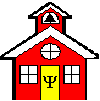Education and Human Sciences, College of

Department of Educational Psychology: Faculty Publications
Document Type
Article
Date of this Version
2017
Citation
Int. J. Environ. Res. Public Health 2017, 14, 1099; doi:10.3390/ijerph14101099.
Abstract
About 70% of the beverage alcohol consumed in China annually is spirits. Recorded spirits make up most spirit consumption, but about 25% of total alcohol consumption (1.7 L pure alcohol per capita annually) is unrecorded spirits (bai jiu), either homemade or made in unregulated distilleries. In some parts of China, the consumption of unrecorded spirits is higher than average. This paper compares the patterns of use of unrecorded distilled spirits and recorded distilled spirits among rural residents in Central China. Interviews were conducted with 3298 individuals in 21 towns/villages in 10 counties in the Hubei, Anhui, and Hebei provinces in the People’s Republic of China. Unrecorded bai jiu drinkers chose it because of its taste and its low price. It was consumed mostly by older men, mostly at home with family, more regularly and at higher alcohol by volume (ABV) compared to recorded alcohol. Recorded bai jiu drinkers were more likely to drink away from their homes, consumed more bai jiu at memorable drinking occasions, and reported feeling sick after drinking more often than unrecorded bai jiu drinkers. This comparison of patterns of use of unrecorded bai jiu and recorded bai jiu does not suggest that unrecorded bai jiu is more problematic for drinkers.
Included in
Child Psychology Commons, Cognitive Psychology Commons, Developmental Psychology Commons, School Psychology Commons


Comments
Copyright © 2017 by the authors. Licensee MDPI, Basel, Switzerland. This article is an open access article distributed under the terms and conditions of the Creative Commons Attribution (CC BY) license.